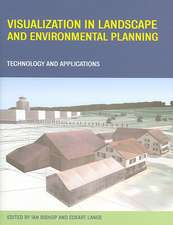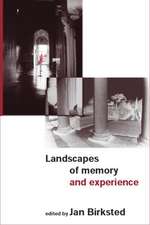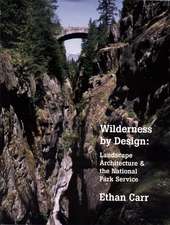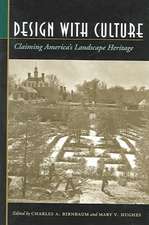The City in American Cinema: Film and Postindustrial Culture
Editat de Dr Johan Andersson, Lawrence Webben Limba Engleză Paperback – 27 ian 2021
| Toate formatele și edițiile | Preț | Express |
|---|---|---|
| Paperback (1) | 221.76 lei 6-8 săpt. | |
| Bloomsbury Publishing – 27 ian 2021 | 221.76 lei 6-8 săpt. | |
| Hardback (1) | 660.15 lei 6-8 săpt. | |
| Bloomsbury Publishing – 26 iun 2019 | 660.15 lei 6-8 săpt. |
Preț: 221.76 lei
Preț vechi: 277.02 lei
-20% Nou
Puncte Express: 333
Preț estimativ în valută:
42.43€ • 44.22$ • 35.14£
42.43€ • 44.22$ • 35.14£
Carte tipărită la comandă
Livrare economică 03-17 aprilie
Preluare comenzi: 021 569.72.76
Specificații
ISBN-13: 9781350194748
ISBN-10: 1350194743
Pagini: 400
Ilustrații: 28 bw illus
Dimensiuni: 156 x 234 x 24 mm
Greutate: 0.55 kg
Editura: Bloomsbury Publishing
Colecția Bloomsbury Academic
Locul publicării:London, United Kingdom
ISBN-10: 1350194743
Pagini: 400
Ilustrații: 28 bw illus
Dimensiuni: 156 x 234 x 24 mm
Greutate: 0.55 kg
Editura: Bloomsbury Publishing
Colecția Bloomsbury Academic
Locul publicării:London, United Kingdom
Caracteristici
Case studies include Inception, Doctor Strange, Frances Ha, Fruitvale Station and Desperately Seeking Susan.
Notă biografică
Johan Andersson is Senior Lecturer in Urban Geography at King's College London, UK. He is the co-editor, with Lawrence Webb, of Global Cinematic Cities: New Landscapes of Film and Media (2016), the co-author, with Gallent and Marco Bianconi, of Planning on the Edge (2006) and has published articles in journals such as Antipode, IJURR, Society and Space and Urban Studies. Lawrence Webb is Senior Lecturer in Film Studies at the University of Sussex, UK. He is author of The Cinema of Urban Crisis: Seventies Film and the Reinvention of the City (2014). He is co-editor, with Johan Andersson, of Global Cinematic Cities: New Landscapes of Film and Media (2016), and with Joshua Gleich, Hollywood On Location: An Industry History (2018).
Cuprins
American Cinema and Urban Change: Industry, Genre, and Politics from Nixon to Trump, Johan Andersson, King's College London, UK and Lawrence Webb, University of Sussex, UKPart One: Film Production and the Postindustrial TurnDaniel Bell, Post-industrial Society and Los Angeles Cinema c.a 1967-72, Mark Shiel, King's College London, UKMade in New York: Film Production, the City Government, and Public Protest in the Koch Era, Lawrence Webb, University of Sussex, UK You Don't Have to Call Us Home, but Please Stay Here: The City Film Commission, Nathan Koob, Oakland University, USAThe Boston Movie Boom, Carlo Rotella, Boston College, USAPart Two Postindustrial Narratives and Aesthetics The New Boston and the Grip of Tradition: The Friends of Eddie Coyle (1973), The Brink's Job (1978), and The Verdict (1982), Stanley Corkin, University of Cincinnati, USAUndead Detroit: Crisis Capitalism and Urban Ruin, Camilla Fojas, University of Virginia, USAThe Flexible Urban Imaginary: Postindustrial Cities in Inception, The Adjustment Bureau, and Doctor Strange, Nick Jones, University of York, UKA Networked Life: Representations of Connectivity and Structural Inequalities in Fruitvale Station, Amy Corbin, Muhlenberg College, USAPart Three Cinema and Gentrification 9 For Whom Are the Movies?: The Landscape of Movie Exhibition in the Gentrified City, Brendan Kredell, Oakland University, USAEbbets Field and Other Monuments: Outer Borough Neighborhoods and Revanchism in 1990s Cinema, Erica Stein, Vassar College, USAGentrification by Genre: Desperately Seeking Susan and the 1980s Screwball, Johan Andersson, King's College London, UKFrances Doesn't Live Here Anymore: Gender, Crisis, and the Creative City in Frances Ha and The Giant Mechanical Man, Martha Shearer, King's College London, UKIndex
Recenzii
The authors accomplish an immense feat when giving form to the feeling of incongruence that grips one as they walk through the locations these essays discuss . [this book] gives one the language to understand one's place in the socio-spatial world.
The forging of cinema within the crucible of urban modernity has been well established by scholars, but what happens to this connection as both cities and filmmaking transform in the post-industrial era? This collection brings long overdue focus to the decades following World War II, demonstrating how the deep interrelation between cinema and the city is sustained in the way movies are made, where they're shown, and the we see on screen.
This collection offers an expansive bird's-eye view as well as street-level scrutiny of the post-classical cinematic cityscape, providing compelling, clear-sighted assessment of the mutually regenerative exchange between American cities and the U.S. film industry since the 1960s. Drawing on cultural geography, spatiality theory, and production and exhibition histories, (T)hese cogent, accessible essays map cinema's urban imaginaries and the cities and conditions out of which they are conjured, ranging from the postindustrial urban decline of American New Wave cinema to the gentrified "creative city" of recent indie film, from the outer borough to the indieplex, and from Nixon to Trump.
This vital collection provides a broad interrogation of how American film, through its representational and industrial practices, has been deeply involved in the re-making of urban space.
As expected, New York and Los Angeles play a key role in investigating the postindustrial American city; the perceptive analyses of the spatial imagination and real spaces of postindustrial San Francisco, Boston, Oakland, and Detroit expand the book's scope and its importance to urban film studies.
A welcome addition to the literature on film and urbanism. Attends to the way different cities and genres imagine the urban and negotiate the unequal realities of postindustrial America.
Smartly conceived and elegantly organized, this collection illuminates the many ways that the rise of the post-industrial city has left its transformative mark on the past half century of American cinema.
The forging of cinema within the crucible of urban modernity has been well established by scholars, but what happens to this connection as both cities and filmmaking transform in the post-industrial era? This collection brings long overdue focus to the decades following World War II, demonstrating how the deep interrelation between cinema and the city is sustained in the way movies are made, where they're shown, and the we see on screen.
This collection offers an expansive bird's-eye view as well as street-level scrutiny of the post-classical cinematic cityscape, providing compelling, clear-sighted assessment of the mutually regenerative exchange between American cities and the U.S. film industry since the 1960s. Drawing on cultural geography, spatiality theory, and production and exhibition histories, (T)hese cogent, accessible essays map cinema's urban imaginaries and the cities and conditions out of which they are conjured, ranging from the postindustrial urban decline of American New Wave cinema to the gentrified "creative city" of recent indie film, from the outer borough to the indieplex, and from Nixon to Trump.
This vital collection provides a broad interrogation of how American film, through its representational and industrial practices, has been deeply involved in the re-making of urban space.
As expected, New York and Los Angeles play a key role in investigating the postindustrial American city; the perceptive analyses of the spatial imagination and real spaces of postindustrial San Francisco, Boston, Oakland, and Detroit expand the book's scope and its importance to urban film studies.
A welcome addition to the literature on film and urbanism. Attends to the way different cities and genres imagine the urban and negotiate the unequal realities of postindustrial America.
Smartly conceived and elegantly organized, this collection illuminates the many ways that the rise of the post-industrial city has left its transformative mark on the past half century of American cinema.










